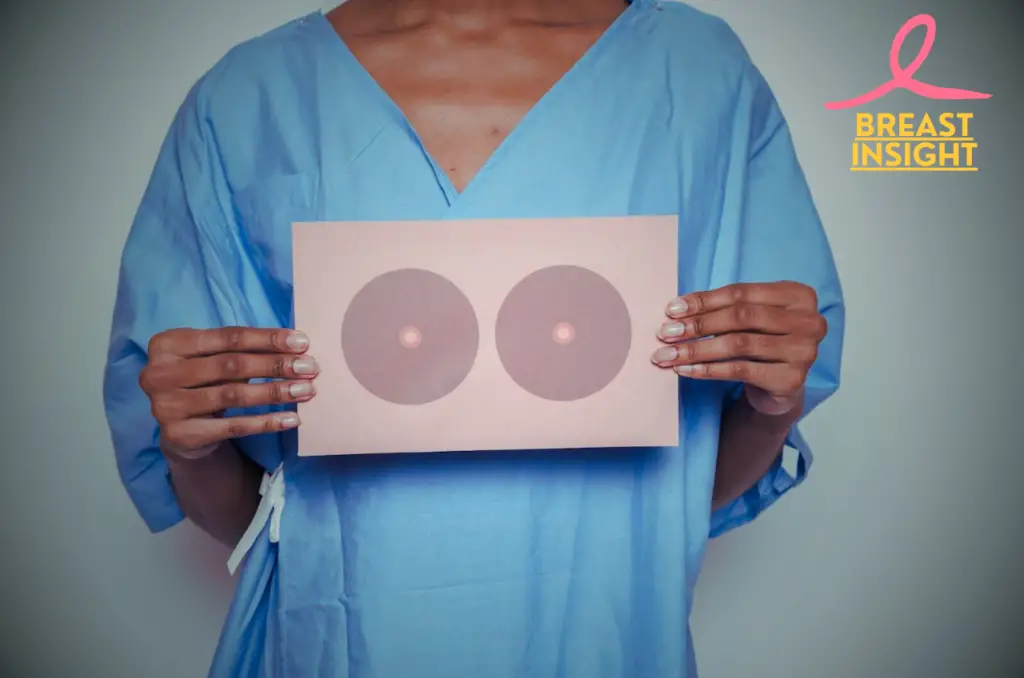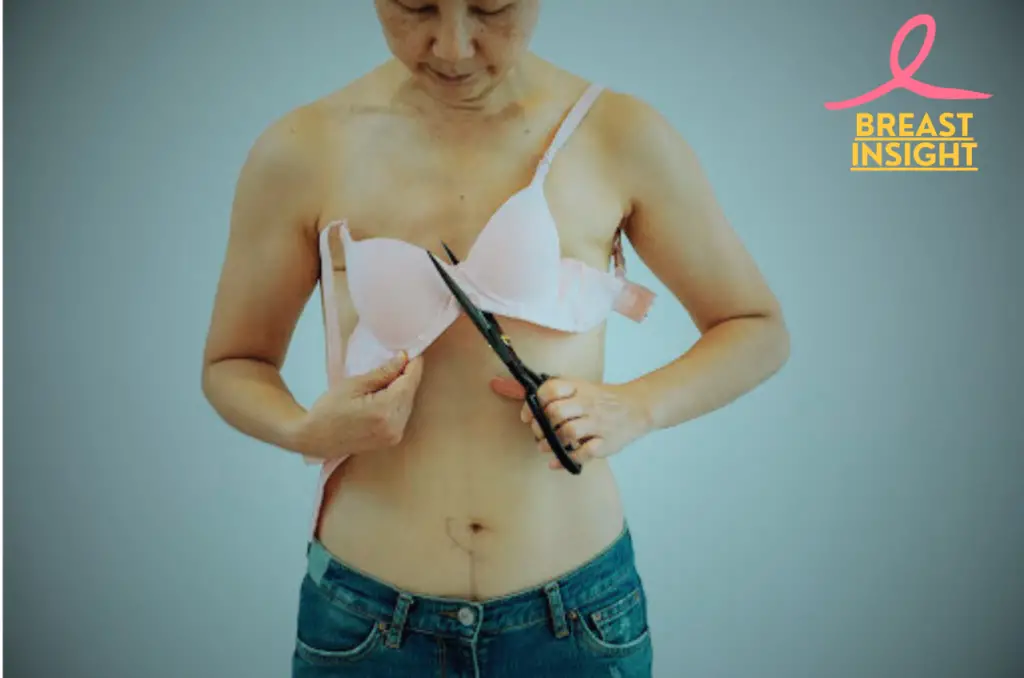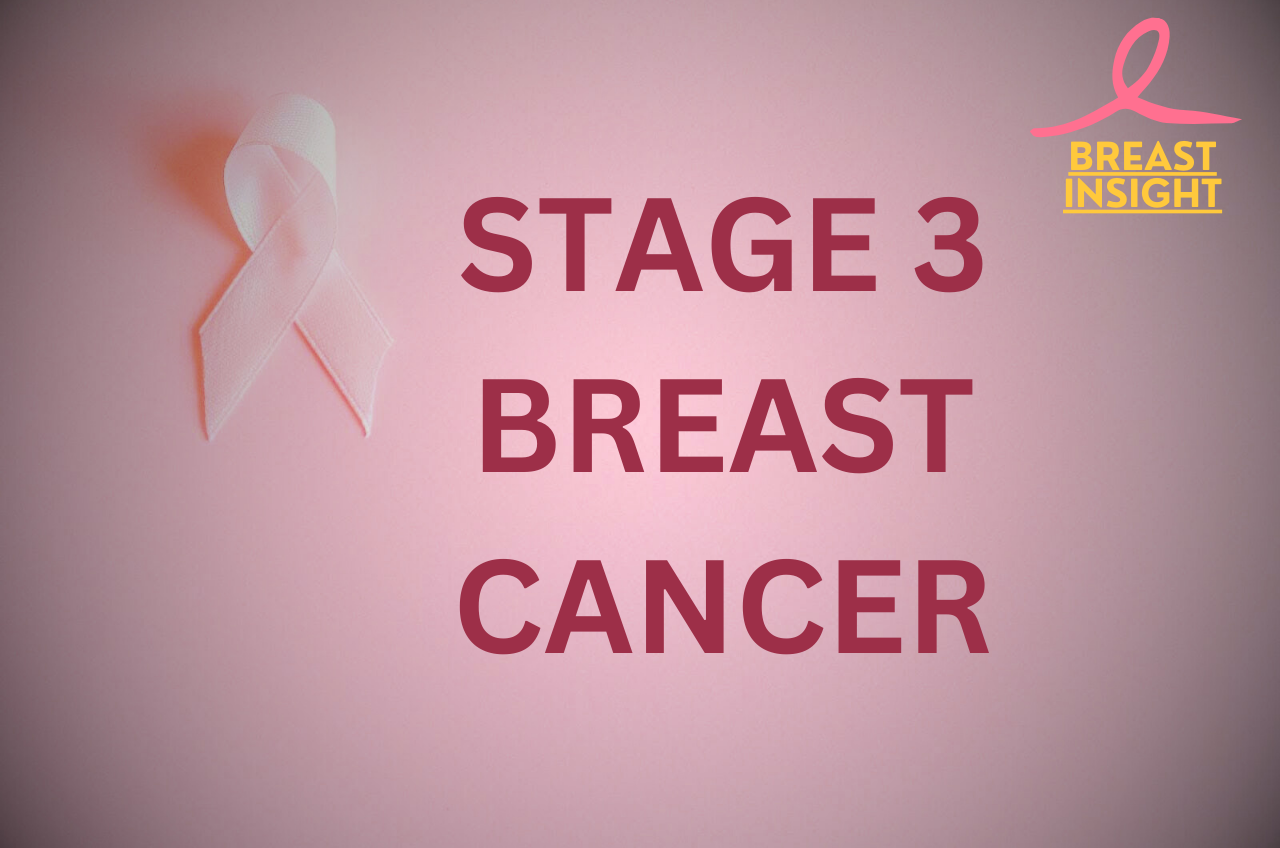Every two minutes, a woman in America receives the life-changing news of Stage 3 breast cancer. Time seems to halt and a whirlwind of questions burst through your mind in that split second. Although any diagnosis of cancer is a serious matter, Stage 3 breast cancer presents its own set of challenges; however, it most definitely does not represent the end of the road.
Understanding the nature of Stage 3 breast cancer is really important, because it falls at a critical crossroads—more advanced than early-stage breast cancer but still within the realm of modern medical possibilities? To grasp its complexities, it helps to start with a solid foundation about what breast cancer is, including its causes, symptoms, and treatment approaches. Learn more about breast cancer here to build your understanding and take charge of your health journey. Whether you are newly diagnosed, standing by someone you love, or working to expand your knowledge, knowing what you’re up against is what’s crucial first in taking charge of your journey.
Now, let’s explore the basic principles of Stage 3 breast cancer, including range and diagnostic techniques, as well as the treatment options and inspiring real-life survival stories. We’ll break down complex medical jargon into lucid, actionable understanding that empowers you to take informed decisions for your health journey.

Understanding Stage 3 Breast Cancer
Definition and Classification
Stage 3 breast cancer is also classified as locally advanced breast cancer, and where the tumor size is more than 5 centimeters. Lymph nodes involvement may be high. It is sub-divided into three types,
- Stage 3A- The tumor size does not exceed more than 4 to 9 axillary lymph nodes
- Stage 3B- Tumor of chest wall or skin is invaded
- Stage 3C- Extended to more than 10+ lymph nodes
Difference from Other Stages
| Stage | Primary Tumor Size | Lymph Node Involvement | Spread |
| Stage 1 | < 2cm | None to minimal | Localized |
| Stage 2 | 2-5cm | Limited | Localized |
| Stage 3 | > 5cm | Extensive | Regional |
| Stage 4 | Any size | Any number | Distant organs |
Common Symptoms
Breast cancer stage 3 has more overt signs and symptoms than earlier stages:
- Larger breast lump (usually > 5cm)
- Skin changes including dimpling or redness
- Nipple inversion or discharge
- Breast pain or swelling
- Enlarged lymph nodes under arm or collarbone
- Changes in breast size or shape
- Skin thickening or orange-peel appearance
Risk Factors
Several factors contribute to the development of advanced breast cancer:
Primary Risk Factors:
- Age (risk increases with age)
- Family history of breast cancer
- Genetic mutations (BRCA1 and BRCA2)
- Previous exposure to radiation
- Densely textured breast tissue
Lifestyle Risk Factors:
- Obesity
- Poor physical activity
- Alcohol use
- Hormone replacement therapy
- Late pregnancy or no pregnancy
Having more than one risk factor does not predict that the patient will inevitably suffer from stage 3 breast cancer; for those with increased risks, maintaining vigilance through screenings becomes key. Additionally, while breast cancer is often associated with women, it’s important to recognize that male breast cancer is real and poses unique challenges. Explore more about male breast cancer here and understand the importance of awareness for all genders. Now, with our understanding of just what stage 3 breast cancer refers to, let’s discuss the myriad ways this disease has been diagnosed.

Diagnosis Methods
Physical Examination
A wide-ranging physical examination is usually the start of diagnosis for stage 3 breast cancer. In a physical examination, health care providers:
- Inspect both breasts for lumps or changes in the skin or nipple
- Examine the armpit and neck lymph nodes
- Inspect for dimpling or redness on the breast skin
- Perform a checkup to identify any existence of discharge or inversion on the nipple
Routine breast self-examinations can also play a crucial role in detecting early changes in breast tissue. Learn the steps of breast self-examination here and take proactive measures to stay informed about your breast health.
Imaging Tests
There are various imaging tests that confirm the existence and severity of breast cancer:
| Imaging Test | Purpose | Key Features |
| Mammogram | Primary screening tool | Detects masses and calcifications |
| Breast MRI | Detailed tissue imaging | Shows tumor size and chest wall involvement |
| CT Scan | Checks for spread | Examines lymph nodes and distant organs |
| PET Scan | Evaluates metabolism | Identifies active cancer cells |
| Ultrasound | Guides biopsy | Distinguishes solid masses from fluid-filled cysts |
Biopsy Techniques
Biopsy remains the definitive method for confirming stage 3 breast cancer diagnosis. Common biopsy types include:
Core Needle Biopsy:
- Removes small tissue samples using a hollow needle
- Usually guided by ultrasound or mammogram
- Most common initial biopsy method
Surgical Biopsy:
- Excisional: Removes entire suspicious area
- Incisional: Takes only a portion of the suspicious area
- Performed when needle biopsy is inconclusive
Lymph Node Biopsy:
- Sentinel lymph node biopsy: Examines first nodes where cancer likely spreads
- Axillary lymph node dissection: Removal of several nodes for examination
- Is mandatory for cancer staging
After tissue removal, the pathologists examine the specimens to identify:
- Type and grade of Cancer
- Hormone receptor status
- HER2 status
- Ki-67
- Genomic testing for treatment
These extensive diagnostic tests play a pivotal role in determining the exact nature and degree of the cancer. This serves to help surgeons and doctors design a specific treatment plan that is individualized according to the characteristic features of the cancer. Assuming there is an effective diagnosis, the doctors have already begun with treatment planning. Based on several methods through which stage 3 breast cancer is diagnosed, it is now feasible to discuss treatment options available for any patient affected by this disease.

Treatment Options
Surgery Types
The treatment process for Stage 3 breast cancer often starts with surgery that can include:
- Modified Radical Mastectomy: Involves complete removal of the breast tissue, nipple, and lymph nodes
- Breast-Conserving Surgery: Removal of tumor and surrounding tissue while preserving breast
- Axillary Lymph Node Dissection: Removal of affected lymph nodes
Chemotherapy Protocols
Chemotherapy serves a vital function in the treatment of Stage 3 breast cancer, typically given in precise sequences:
| Timing | Purpose | Common Drugs |
| Neoadjuvant | Shrink tumor before surgery | Taxanes, Anthracyclines |
| Adjuvant | Kill remaining cancer cells | Cyclophosphamide, Fluorouracil |
| Maintenance | Prevent recurrence | Capecitabine |
Radiation therapy
Radiation therapy typically follows surgery to eliminate remaining cancer cells:
- External beam radiation delivers focused radiation to particular regions
- Regional lymph node radiation
- Daily treatments for 5-7 weeks
- Intensity-modulated radiation therapy (IMRT)
Hormone Therapy
For hormone receptor-positive cancers, treatments include:
- Tamoxifen for Pre-Menopausal Women
- Aromatase inhibitors for postmenopausal women
- Ovarian suppression therapy
- Treatment period: 5-10 years
Targeted treatments
Modern targeted therapies focus on specific cancer characteristics:
| Cancer Type | Targeted Treatment |
| HER2+ | Trastuzumab, Pertuzumab |
| Triple Negative | Immunotherapy |
| BRCA+ | PARP inhibitors |
Combining these approaches, in an effective manner, often determines the success of treatment. The particular combination and treatment sequence may depend on various factors.
- Tumor size and location
- Lymph node involvement
- Hormone receptor status
- HER2 status
- Overall health condition
- Genetic basis
Doctors typically formulate tailored treatment plans which may encompass all or some of these interventions. Adverse effects are carefully monitored through supportive care measures, which encompass:
- Anti-nausea medications
- Growth factors for blood cell production
- Pain management protocols
- Nutritional support
Treatment duration varies but typically spans 6-12 months for initial therapy, followed by ongoing maintenance treatments. Regular monitoring helps adjust treatments as needed for optimal outcomes.
Understanding early-stage breast cancer can offer important context to the progression of the disease. Discover the journey from Stage 0 breast cancer to fighting back and see how early intervention can make a critical difference. Thanks to great advances in treatment options and personalized medicine, patients diagnosed with Stage 3 breast cancer face today the most diverse set of effective therapeutic options than ever. In the next section, we will also discuss survival statistics associated with different treatment regimens and their implications for long-term prognosis.

Survival Statistics
Five-year survival rates
The survival rate for stage 3 breast cancer differs because of some causes. According to the current medical statistics, the five-year survival rate for this stage of breast cancer is about 72%. This figure indicates that almost 72 out of every 100 diagnosed with this stage of stage 3 breast cancer will at least have a minimum chance of survival for five years after their diagnosis at this critical stage.
| Subtype of Stage 3 | 5-Year Survival Rate |
| Stage 3A | 75% |
| Stage 3B | 61% |
| Stage 3C | 49% |
Factors Influencing Outcome
A few key things influence the prognosis of stage 3 breast cancer.
- Hormone receptor status, whether HR-positive or HR-negative
- HER2 status
- Age at diagnosis
- General health status
- Response to treatment
- Specific genetic changes
- Timing of diagnosis and treatment commencement
The presence of hormone receptors usually implies a better prognosis, as these cancers tend to be reasonably sensitive to hormone therapy. HER2-positive cancers, once thought to be affiliated with a particularly aggressive variant of the disease, now can be treated with targeted therapies, which have greatly improved their prognosis.
Quality of Life Issues
Indeed, a person diagnosed with stage 3 breast cancer can still experience an excellent quality of life if well supported and managed. The factors that influence such quality of life include:
Physical Health:
- Managing the side effects of treatment
- Physical rehabilitation
- Pain control
- Regular exercise as tolerated
Emotional Well-being:
- Access to mental health care
- Involvement with support organizations
- Family and Social Support Systems
- Stress management skills
Practical Problems:
- Planning financially
- Work accommodations
- Insurance coverage
- Prescription schedule
Studies have demonstrated that patients who are active participants in their care decisions and build strong support networks often respond better to their treatment interventions. For those navigating an earlier stage of breast cancer, understanding its progression is crucial. Learn how to take control from the earliest stages of breast cancer to improve long-term outcomes. Ongoing monitoring and follow-up care are needed to address both the short-term and long-term impact of treatment.
Having understood the survival statistics and the factors that influence prognosis, we can now explore practical approaches to daily life with stage 3 breast cancer, including daily management techniques and sources of support.

Living with stage 3 breast cancer
Managing Side Effects
Treatment for stage 3 breast cancer can cause a range of effects that need to be monitored carefully. A general overview of frequent adverse effects and their treatment is as follows:
| Side Effect | Management Strategy |
| Fatigue | Regular rest periods, light exercise, proper nutrition |
| Nausea | Anti-nausea medications, small frequent meals, ginger tea |
| Hair Loss | Scalp cooling during chemotherapy, wigs, scarves |
| Pain | Prescribed pain medication, massage therapy, acupuncture |
| Lymphedema | Compression garments, specialized exercises, lymphatic drainage |
Emotional Support
Navigating the emotional landscape of stage 3 breast cancer demands a robust support system:
Professional Assistance:
- Oncology social workers
- Mental health counselors
- Support group facilitators
Personal Support Network:
- Family members
- Friends
- Fellow survivors,
- Virtual societies
Lifestyle Changes
Appropriate lifestyle adjustments now, however, constitute the key to recovery and healing.
Nutrition Interventions:
- More protein consumption
- Reduced processed foods
- Adequate hydration
- Frequent, modest-sized meals
Workout Routine:
- Low-impact activities
- Gentle yoga
- Supervised physical therapy
- A gradual rise in activity levels
For patients in earlier stages of breast cancer, tailored lifestyle changes can be equally impactful. Explore our complete survival guide for stage 2 breast cancer to understand how proactive care can improve outcomes.
Aftercare Essentials
Monitoring needs to be performed regularly for long-term survival. Standard follow-up examination typically includes:
| Timeline | Required Actions |
| First Year | Monthly check-ups, quarterly imaging |
| Second Year | Bi-monthly check-ups, semi-annual imaging |
| Years 3-5 | Quarterly check-ups, annual imaging |
| After Year 5 | Annual check-ups and imaging |
Keeping a fine account of all symptoms, drugs taken, and side effects lets the health care team accurately adjust the treatment plan. Many patients find using electronic health applications or journals helps them track their progress and keep track of their appointments.
Preventive measures also hold importance for all stages of breast cancer. Break risky habits and learn how to reduce your breast cancer risk today for a healthier future.
Working closely with your healthcare team is crucial for identifying potential complications early. Regular communication about any new symptoms or concerns ensures prompt intervention when needed.
Having discussed the basic features of living with stage 3 breast cancer, the reality becomes that no two people have a similar experience; hence, treatment must always be tailored to serve and meet individual needs and circumstances.

Conclusion
Stage 3 breast cancer poses substantial challenges, yet the strides made in modern medicine present a range of treatment options and instill hope in patients. From surgical procedures to targeted therapies, every treatment plan is meticulously designed to suit individual circumstances, aiming to deliver the most favorable outcomes for those impacted.
Actively engaging in your treatment, building a close relationship network, and educating yourself about the condition are all proactive steps toward managing your Stage 3 breast cancer successfully. Although the diagnosis might be shocking, many patients have passed this test with excellent support from the medical team, loved ones, and other support networks. Keep healthy, stay on track with your course of treatment, and do not be afraid to ask for help when needed.
Frequently Asked Questions (FAQs)
What are the survival rates for Stage 3 breast cancer?
Thus, survival from Stage 3 breast cancer is significantly different with many aspects involved; such aspects include specific sub-type, age of the patient, and the reaction of the patient to the treatment. Precisely, the five-year relative survival rate ranges between 72% and 85%. The early catch plus proper state-of-the-art treatment will actually highly boost these survival statistics.
What are the common symptoms of Stage 3 breast cancer?
The common symptoms of Stage 3 breast cancer include lumps felt in the breast or underarm area, changes in the skin, such as redness or dimpling, swelling of the breast, and sometimes discharge from the nipple. If you notice any of these symptoms, report immediately to a healthcare professional for evaluation.
How is Stage 3 breast cancer diagnosed?
A mammogram, ultrasound, and biopsies are used to locate cancer in stage 3 with its location in a particular breast. The lymph nodes also need to be tested because staging will give information on how far the cancer had spread and establish individual treatment protocols.
What treatment options are available for Stage 3 breast cancer?
Treatment options for Stage 3 breast cancer usually involve a mix of surgery (mastectomy or lumpectomy), radiation therapy, chemotherapy, hormonal therapy (if hormone-receptor positive), and targeted therapy (for HER2-positive cancers). Treatment plans are tailored to each person’s situation, and it is important to talk about options with an oncologist.

